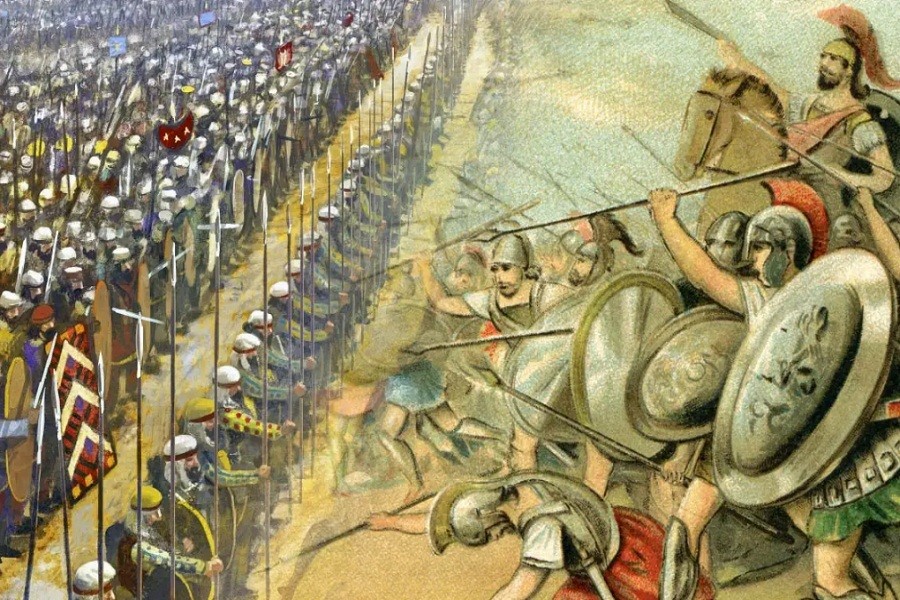The Persian king Xerxes launched a second invasion of Greece in 480 B.C. to subjugate the city-states. His large army emerged victorious at Thermopylae. His ships also broke through at Aremisium, but he suffered a setback following the defeat of his navy in the battle of Salamis.
Xerxes then returned to Asia with the bulk of his men, leaving General Mardonius to command the rest in Greece. He might have planned to come back in the summer of next year to finish the invasion.
The Greeks soon fielded a large army to expel Mardonius. In 479 B.C., they marched under spartan general Pausanias.
According to Herodotus, the Greek army numbered 110,000 against 350,000 Persian.
However, modern historians believe this to be an exaggeration. A more realistic number is around 40,000 Greeks and about 100,000 Persians.
The Greek army probably did not have any cavalry. But their infantry was heavily armed with strong armour. The Persian infantry, except for the famous Immortals, were only lightly armed, and their armour was weak.
The Persian army was undoubtedly larger than the Greeks. They were stationed at Platea in southeastern Boetia. This was close to the city of Thebes, a Persian ally. Pausanius assembled his army on the hills near Mardonius’s camp, thus attaining a more advantageous position.
Mardonius faced the enemy with Persians in the centre and allies on the flanks. He kept the cavalry further back. Pausanias placed his army to face the Persians but waited for the attack, which never came because Mardonius knew that the Greeks were occupying the high ground.
So, he tried diplomacy to break the tenuous union among the Greek city-states. As a contingency, he also launched a few cavalry attacks to see if the Greeks had left their position to start the attack. Both approaches failed, and his cavalry commander Masistius was killed.
The Greeks now advanced closer to the Persian camp, maintaining high ground. Persian cavalry targeted their supply lines. Following two consecutive attacks, Mardonius successfully disrupted their supply and blocked the road to Gargaphian Spring, the only water source available to the Greeks.
Worried, Pausanias ordered a retreat to a position farther back. The movement started at night, but it was delayed, and then they were caught in a dangerous position in daylight.
Their army was disorganised, and the left flank was exposed. Mardonius took the opportunity and ordered a cavalry charge. Soon the Greek defences were fractured, and a full retreat seemed to be initiated. Certain of victory, Mardonius held back his cavalry and ordered the infantry to pursue them. This was a mistake.
The Greek infantry rallied by this time and routed the Persians. Mardonius was killed, and his army was scattered.
According to Herodotus, Greek losses were probably 10,000, while more than half of the Persian army was destroyed. The remaining forces went to Thessaly, and it took time to expel them from Greece completely.
To commemorate the great victory, the Greeks constructed a bronze column in Delphi inscribed with the names of all the Greek cities participating in the battle. The column was later brought to Constantinople by emperor Constantine.
Another battle took place around the same time. If Herodotus is right, it happened on the same day too. It was near Mount Mycale on the Ionian coast. The Persian navy ships were beached here for repair.
When the Greek Ships appeared, the Ionian cities revolted against their Persian masters. The combined Greek army annihilated the Persian garrison there, leading to the death of their commander Tigranes.
Platea and Mycale are thought to end the second Persian invasion of Greece. These two battles are considered to be the end of the Greco-Persian Wars. After this, Persia never invaded Greece.


